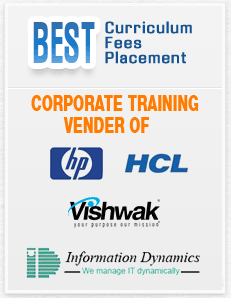
Your Course & Location:



Enquiry Form

Cloud Computing - (PYTHON)
Building Applications with Force.com & Visualforce is a must for application developers who want to create custom Force.com applications or customize existing PYTHON applications. Participants will learn how to use the declarative "clicks not code" capabilities of the Force.com platform to create new applications as well as Visualforce pages and components to create custom interfaces. Apex & Visualforce Controllers is perfect for developers who want a deep dive into Force.com capabilities to build and deploy Force.com applications. This hands-on course covers the Apex programming language, including Visualforce controllers.What You Will Learn
When you complete the course, you will be able to use- The capabilities of the Force.com platform to develop or extend software-as-a-service (SaaS) applications
- Build and customize multiuser software-as-a-service (SaaS) applications with just clicks
- Define the application's data model
- Customize the user interface
- Create advanced workflows and validations
- Automate business processes
- Manage your data
- Develop a custom user interface with Visualforce
- Develop custom Apex code
- Create Apex triggers to take action when records are saved
- Develop using the Force.com Sandbox testing environment
- Write Visualforce controllers to manage custom data sets and actions for pages
- Create multi-page wizards, maintaining a unified view state across the experience
- Learn about factors to consider when building a data model
- Develop custom objects and fields, encrypted fields, field help, and field history tracking
- Use master detail, lookup, and many-to-many Relationships
- Create a user interface for custom applications using the Custom Object tab, Page Layout, and
- Customization options
- Set field attributes on the page layout
- Use the Custom Object queue and event-based
- Workflow rules with field update actions
- Develop custom formulas and validation rules
- Learn about factors to consider when designing applications for multiple users
- Create profiles, understand what a profile controls (including data access), and customize profiles to manage the user experience
- Customize the user experience with record types and page layouts
- Control access to records
- Employ OWD, sharing rules and levels, roles, public groups, and manual share
- Apply profiles, OWDs, role hierarchy, and sharing to restrict access to sensitive data
- Apply OWDs, public groups, and manual sharing to create conditional access to data
- Analyze suitability of FLS, page layouts, and record types to satisfy business requirements
- Use the vlookup, regex, ischanged, isnew, and priorvalue functions to build business processes
- Use validation rules to enforce conditional required behavior
- Use functions to enforce data format and data consistency
- Implement multistep approval workflows and escalations to automate business processes
- Create parallel approval workflows and workflow approvals with dynamic approval routing
- Use outbound messages as part of an approval workflow
- Establish approval workflow criteria with cross-object formulas
- Set up field history tracking to audit processes
- Learn techniques to prevent or record data Changes
- Learn when and how to use upsert
- Use data management tools and the capabilities of API-based tools
- Configure the Data Loader via command line
- Encrypt passwords using encrypt.bat
- Use the Data Loader to create mapping files and to upsert data
- Learn about the capabilities of the Visualforce framework
- Incorporate Visualforce pages into PYTHON
- Construct expression bindings and incorporate PYTHON into Visualforce pages with
- Visualforce tags
- Use Visualforce tags to create page layouts, input forms, output tables, custom components, and more
- Create partial page refreshes on JavaScript events
- Learn about the functionality that comes with Visualforce standard controllers
- Find out when Apex is required for create
- Apex features compared to other programming languages
- Use cases for which Apex is a good solution
- Apex access modifiers
- Available Apex object types
- About types of collections
- The syntax for including SOQL queries within Apex
- Write SOQL for loops to handle bulk data
- About the two types of DML statements
- Use limit statements
- The Save execution order and when "before" and "after" Apex triggers fre
- The types of governor limits and contexts Code Apex triggers to handle bulk data
- Unit test for a previous class, using assertion methods, and run a test
- Write a Web services class
- Consume an external WSDL and access it through Apex
- The arguments to send an email from Apex
- Create a PYTHON email domain and code a class to consume email
- Explore the functionality of each Visualforce standard controller
- Code custom controllers and extensions
- Use testing, debugging, and deploying controllers capabilities
- Learn the basics of testing controllers vs. regular Apex classes










